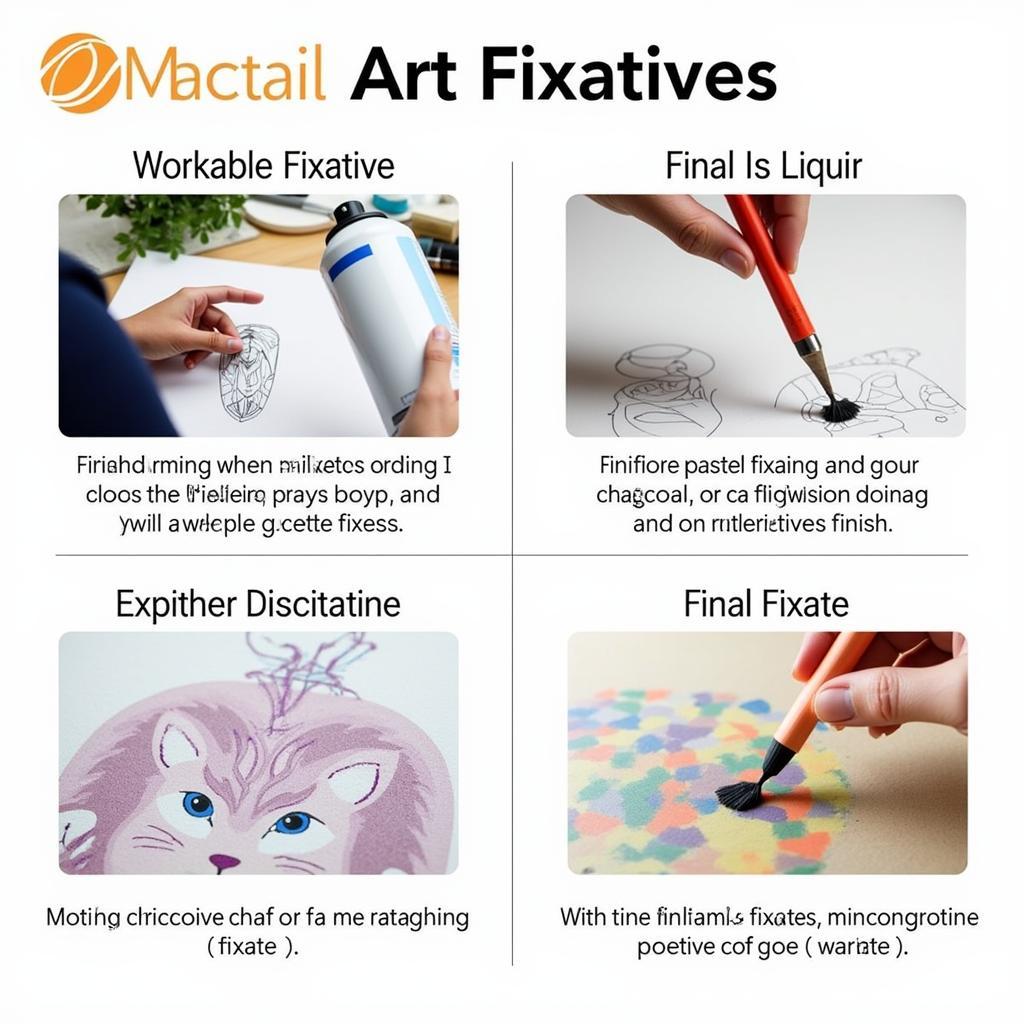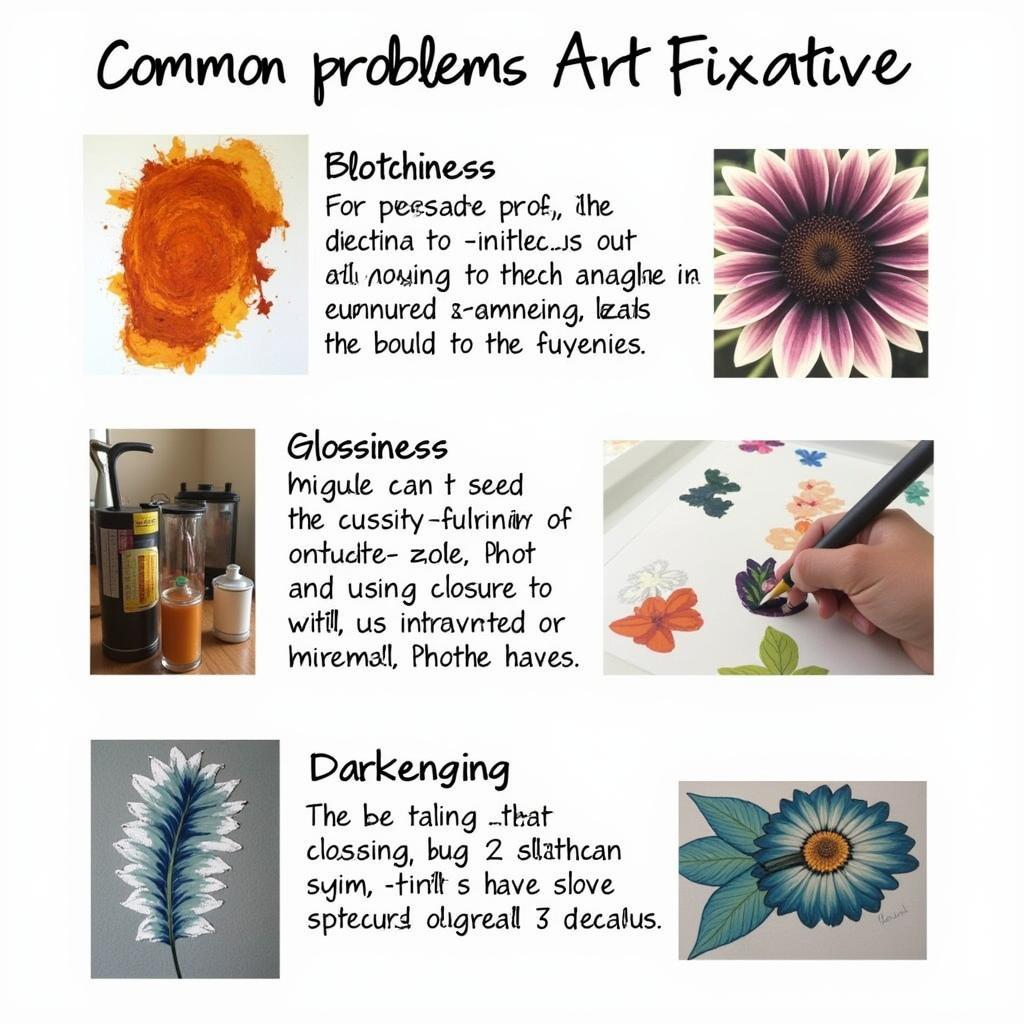The Definitive Guide to Art Fixative: Protecting Your Masterpieces
Art Fixative. These two words hold the key to preserving the vibrancy and longevity of your cherished artwork. Whether you’re a seasoned artist or just starting your creative journey, understanding the nuances of fixative is crucial. This guide will delve into the world of art fixatives, exploring their types, applications, and best practices to ensure your artwork stands the test of time.
What is Art Fixative and Why Do You Need It?
Art fixative is a protective spray or varnish that’s applied to drawings and other artwork created with dry media like charcoal, pastel, pencil, and chalk. It acts as a shield against smudging, flaking, and environmental damage, essentially locking the pigment to the paper and preventing it from migrating. Imagine spending hours meticulously crafting a delicate charcoal portrait only to have it smudged beyond recognition – a fixative prevents this heartbreak. It’s an indispensable tool for any artist working with fragile mediums. After applying fixative, your artwork becomes more resistant to handling and can be safely stored or displayed. Think of it as an invisible armor for your creative expressions. After the first coat, you can continue layering your color marker art.
Choosing the Right Art Fixative: A Breakdown of Types
Choosing the right fixative can be daunting. There are two primary types: workable and final fixatives. Workable fixatives, as the name suggests, allow you to add more layers to your artwork after application, offering flexibility and control. Final fixatives, on the other hand, provide a permanent, protective seal and are typically used as the last step in the creative process. Within these categories, you’ll encounter fixatives in aerosol spray and liquid forms. Spray fixatives are convenient and widely used, while liquid fixatives offer more precise application using a brush or airbrush. The ideal choice depends on your specific medium, working style, and desired finish. Using fixatives on artwork created with supplies like pastel art supplies is crucial for preservation.
 Comparing Different Art Fixative Types
Comparing Different Art Fixative Types
How to Apply Art Fixative: Tips and Tricks for Success
Applying art fixative correctly is essential for achieving optimal results. Before you begin, ensure you’re working in a well-ventilated area. Shake the can thoroughly if using an aerosol fixative. Hold the can about 10-12 inches away from your artwork and apply in short, even bursts, using a sweeping motion to avoid pooling or over-saturation. For liquid fixatives, apply a thin, even coat using a soft brush or airbrush, working in a consistent direction. Allow the fixative to dry completely between coats, if applying multiple layers. Rushing the drying process can lead to unwanted textures or damage to the artwork. Remember, patience is key! You can also explore adding fixative to your charcoal stick art to enhance its permanence.
Common Mistakes to Avoid When Using Fixative
While fixative is a valuable tool, improper use can lead to undesirable outcomes. One common mistake is applying too much fixative, resulting in a sticky, glossy finish or even discoloration. Another pitfall is using the wrong type of fixative for the medium. For example, using a final fixative on a charcoal drawing intended for further layering can ruin the piece. Testing the fixative on a scrap piece of paper similar to your artwork is always recommended. This allows you to assess the fixative’s effect on the paper and the medium before applying it to your finished piece. Proper storage of fixatives is also important. Keep them in a cool, dry place away from direct sunlight or heat. Consider using a fixative spray art for easy and even application.
Troubleshooting Art Fixative Problems
Even with careful application, you might encounter some issues with fixative. If your artwork appears blotchy or uneven, it could be due to inconsistent application or over-saturation. Try lightly dusting the affected areas with a soft brush to blend the fixative. If the fixative leaves a glossy sheen that you didn’t intend, try using a matte fixative next time. Sometimes, fixative can darken the artwork slightly. This is a normal occurrence with certain types of fixatives, especially on lighter-toned papers. Testing the fixative on a scrap piece beforehand can help you anticipate this effect. Fixative can also add a beautiful touch to your simple spring chalkboard art, ensuring it stays vibrant and clear.
 Troubleshooting Common Art Fixative Problems
Troubleshooting Common Art Fixative Problems
Conclusion: Preserving Your Artistic Legacy with Art Fixative
Art fixative is an essential tool for any artist working with dry media. By understanding the different types of fixatives, their applications, and best practices, you can protect your artwork from damage and ensure its longevity. Remember to choose the right fixative for your medium, apply it correctly, and troubleshoot any issues that may arise. With proper care and the use of art fixative, your artistic creations will remain vibrant and captivating for years to come.
FAQ
- How many coats of fixative should I apply? Typically, 1-2 coats are sufficient. Test on a scrap piece first to determine the ideal number for your specific artwork.
- Can I use hairspray as a fixative? While some artists have used hairspray in the past, it’s not recommended as it can yellow over time and damage the artwork.
- How long does fixative take to dry? It usually dries within a few minutes, but it’s best to wait a few hours before handling or framing the artwork.
- What’s the difference between workable and final fixative? Workable fixative allows you to add more layers after application, while final fixative seals the artwork permanently.
- Can I remove fixative from my artwork? Removing fixative is difficult and can damage the artwork. It’s best to test on a scrap piece first to ensure you’re happy with the results before applying it to your finished artwork.
- Is art fixative toxic? Most fixatives contain solvents, so it’s crucial to work in a well-ventilated area. Always follow the manufacturer’s safety instructions.
- Where can I buy art fixative? Art fixative is available at most art supply stores and online retailers.
For further assistance, please contact us at Phone Number: 02462573573, Email: [email protected] or visit our address: Savico Megamall, 7-9 Đ. Nguyễn Văn Linh, Gia Thụy, Long Biên, Hà Nội 10000, Việt Nam. We have a 24/7 customer service team.

